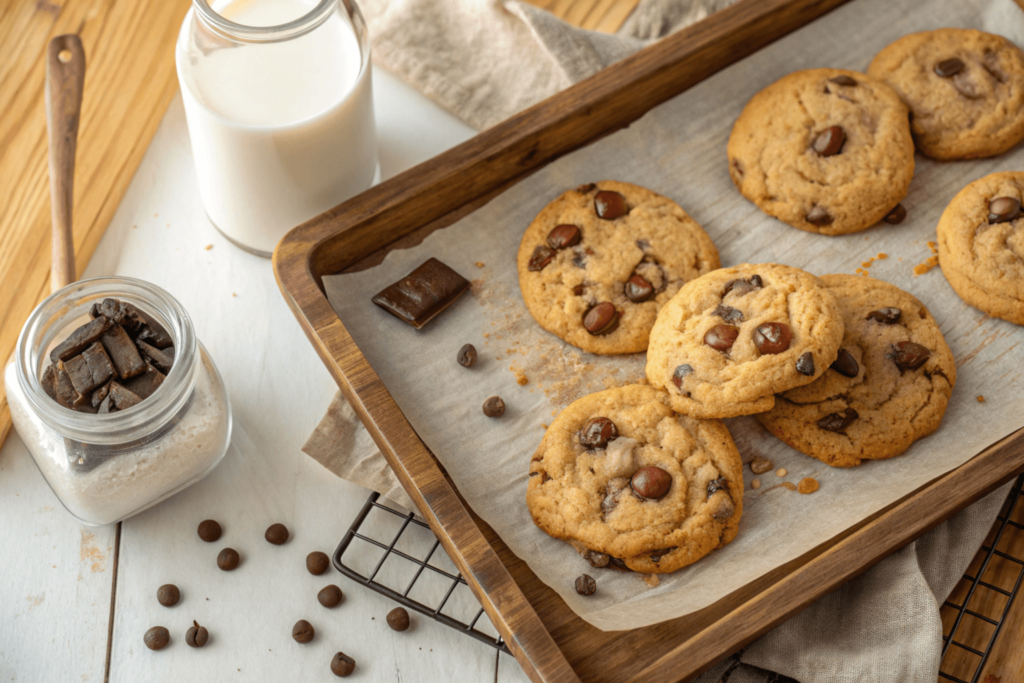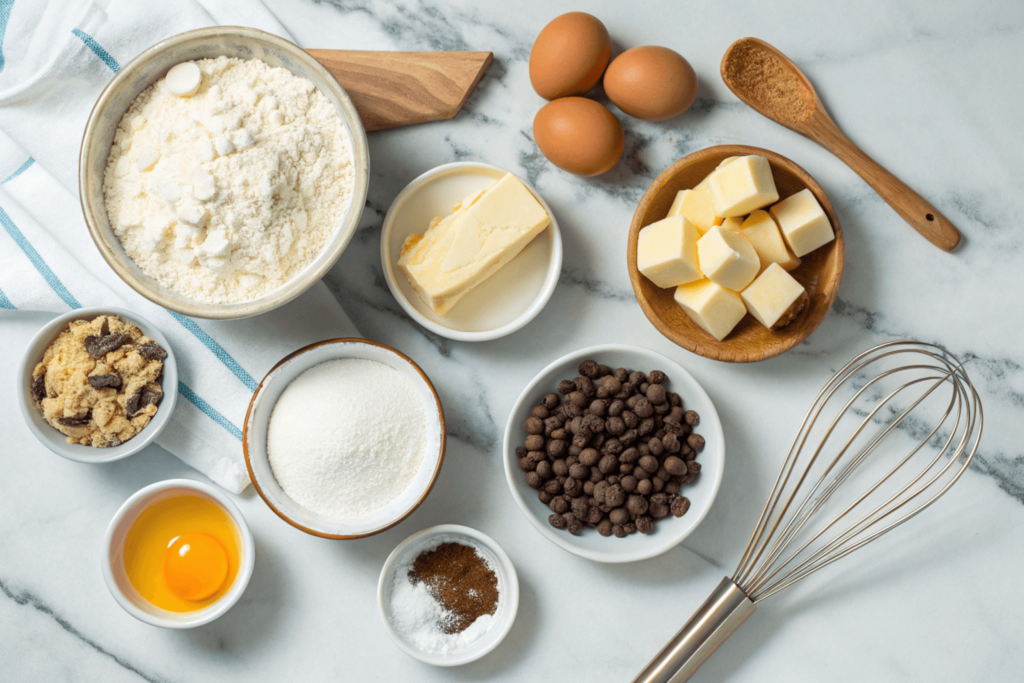
When it comes to baking cookies, the secret to making the best cookies isn’t just about tossing ingredients into the oven. The secret to making the best cookies lies in understanding how each ingredient, like flour and butter, works together. If you’ve ever wondered about the secret to making the best cookies, it’s all about perfecting techniques that create crispy edges, chewy centers, and unbeatable flavor. Additionally, using fresh ingredients and focusing on details, such as chilling dough and adjusting oven temperatures, are essential. To truly master the secret to making the best cookies, you need patience, precision, and practice. Once you’ve unlocked the secret to making the best cookies, you’ll consistently bake treats that look and taste bakery-worthy. Remember, the real secret to making the best cookies is in the little details, which make all the difference for every delicious bite.
Table of contents
- Why We Love the Secret to Making the Best Cookies
- Ingredients You Need for the Secret to Making the Best Cookies
- Temperature: The Game Changer
- Ingredients Schedule for the Secret to Making the Best Cookies
- Conclusion: The Secret to Making the Best Cookies and Their Sweet Reward
- Final Thoughts: Why the Secret to Making the Best Cookies Tells a Story
Why We Love the Secret to Making the Best Cookies
Cookies are the ultimate treat. They’re portable, comforting, and perfect for sharing—or, let’s be honest, hoarding. Whether you’re biting into a warm chocolate chip cookie or indulging in a peanut butter masterpiece, there’s a certain magic that only a good cookie can deliver.
But not all cookies are created equal. Sometimes they spread too much, burn on the bottom, or just taste…off. The good news? Once you learn a few secrets, you’ll never have to deal with disappointing cookies again. Let’s get to it.
Ingredients You Need for the Secret to Making the Best Cookies
Before we dive into techniques, let’s talk about what’s going into your cookies. Using high-quality ingredients isn’t just about being fancy—it’s about setting yourself up for success. Here’s your ingredient checklist and why each one matters.
Flour
- Type: All-purpose flour is the standard for most cookie recipes, but if you want chewier cookies, you can mix in some bread flour. For lighter cookies, try cake or pastry flour.
- How It Works: Flour provides the structure. The protein content in flour determines how chewy or crumbly your cookies will be.
Butter
- Type: Always go for unsalted butter so you can control the saltiness. Real butter (not margarine!) is key for flavor and texture.
- How It Works: Butter adds richness and helps create those irresistible crispy edges.
Sugar
- Types: White sugar gives cookies their crispiness, while brown sugar (thanks to the molasses) keeps them moist and chewy. A mix of both is often ideal.
- How It Works: Sugar helps cookies spread and caramelize for that golden-brown finish.
Eggs
- Type: Large eggs are standard unless the recipe says otherwise. Room-temperature eggs blend better with other ingredients.
- How It Works: Eggs bind the ingredients and add moisture, giving your cookies structure and softness.
Baking Soda or Baking Powder
- How It Works: These leavening agents help your cookies rise and spread evenly. Baking soda is best for cookies that spread, while baking powder creates a more cake-like texture.
Vanilla Extract
- Type: Go for pure vanilla extract if you can. It’s worth the splurge for the rich flavor.
- How It Works: Vanilla enhances the overall sweetness and adds depth to your cookies.
Mix-Ins
- Types: Chocolate chips, nuts, dried fruit, toffee bits—you name it. Add-ins make your cookies unique and fun.
Temperature: The Game Changer
Temperature plays a huge role in cookie success. If your butter is too cold, it won’t cream properly. If your eggs are straight from the fridge, they can mess up the dough consistency. Here’s how to handle it:
- Room Temperature Ingredients: Always let your butter and eggs sit out for about 30 minutes before using them. They’ll mix more evenly, creating a smoother dough.
- Chilling the Dough: This step is non-negotiable for many recipes. Chilled dough spreads less, giving you thicker, more structured cookies. Pop your dough in the fridge for at least 30 minutes—or even overnight.
The Mixing Process: Don’t Overdo It
You might think mixing is straightforward, but there’s a fine line between a perfectly blended dough and a tough, overworked mess.
Creaming Butter and Sugar
- Beat your butter and sugar together until the mixture is light and fluffy. This step creates air pockets, making your cookies soft and tender.
- Pro Tip: Use a hand mixer or stand mixer on medium speed for about 2-3 minutes.
Adding the Dry Ingredients
- Add your flour mixture gradually. Too much mixing at this stage can develop the gluten, making your cookies dense and chewy in the wrong way.
- Stop as soon as you see the flour disappear into the dough.
Shaping and Baking: It’s All About Consistency
When it’s time to shape your cookies, uniformity is the goal. Use a cookie scoop to portion your dough—this ensures even baking. Here are some tips for perfect results:
- To Flatten or Not: For cookies that spread naturally (like chocolate chip), leave them as scoops. For cookies that don’t spread much (like peanut butter), flatten them slightly with your hand or a fork.
- Spacing on the Pan: Leave at least 2 inches between cookies so they don’t run into each other.
Bake Like a Pro: Timing and Temperature
The right oven temperature and timing can make or break your cookies. Most cookies bake best at 350°F, but some recipes call for slightly higher or lower temperatures.
- Oven Placement: Use the middle rack for even heat distribution. Rotate your baking sheet halfway through to avoid uneven browning.
- Timing: Start checking your cookies 1-2 minutes before the suggested bake time. They’re done when the edges are golden, but the centers look slightly underbaked—they’ll firm up as they cool.
Add Some Fun with Mix-Ins
This is where you can get creative. Chocolate chips are classic, but why stop there? Here are some ideas to jazz up your cookies:
- Sweet Add-Ins: White chocolate chunks, caramel bits, or dried cranberries.
- Crunchy Add-Ins: Chopped nuts, pretzels, or granola.
- Savory Twists: A sprinkle of sea salt or a dash of cinnamon can take your cookies to the next level.
Preventing Cookie Disasters
No one wants to pull a tray of sad cookies out of the oven. Here’s how to troubleshoot common issues:
- Flat Cookies: Your butter might have been too warm. Next time, chill the dough longer.
- Dry Cookies: You probably added too much flour. Be sure to measure using the scoop-and-level method.
Baking Ahead: How to Plan Like a Pro
Cookies are one of the best make-ahead desserts. Here’s how to keep them fresh:
- Freezing Dough: Scoop your dough onto a baking sheet and freeze until firm. Transfer the frozen dough balls to a freezer bag—they’ll last up to 3 months. Bake directly from frozen, adding a minute or two to the bake time.
- Storing Baked Cookies: Keep cookies in an airtight container at room temperature for up to a week. For longer storage, freeze them.
The Emotional Side of Cookies
Baking cookies isn’t just about the food—it’s about the memories. Maybe it’s the smell of vanilla that reminds you of your grandma’s kitchen, or the joy of sharing a warm cookie with a friend. Whatever it is, baking cookies is about love, plain and simple.
Ingredients Schedule for the Secret to Making the Best Cookies

Here’s your go-to schedule for cookie ingredients:
| Ingredient | Amount |
|---|---|
| All-Purpose Flour | 2 ½ cups |
| Baking Soda | 1 tsp |
| Salt | ½ tsp |
| Unsalted Butter | 1 cup (room temp) |
| Brown Sugar | 1 cup (packed) |
| Granulated Sugar | ½ cup |
| Vanilla Extract | 2 tsp |
| Large Eggs | 2 |
| Chocolate Chips | 2 cups |
Conclusion: The Secret to Making the Best Cookies and Their Sweet Reward
When it comes to baking the best cookies, it’s all about mastering the little details. From choosing high-quality ingredients to paying attention to temperature and timing, every step plays a role in creating that perfect bite. Whether you’re a chocolate chip purist, an oatmeal raisin fan, or someone who loves experimenting with creative add-ins, the journey to cookie perfection is both a science and an art.
But let’s be real—baking cookies isn’t just about the finished product. It’s about the joy of mixing the dough, the excitement of watching them bake, and the happiness they bring when shared with friends and family. The smell of fresh cookies wafting through your kitchen is a reward in itself, don’t you think?
Even if your cookies don’t turn out perfect the first time, don’t sweat it. Baking is as much about learning as it is about creating. Maybe you overmixed the dough, or the butter wasn’t quite room temperature—that’s okay. Each batch gets you closer to understanding what works best for your style and taste.
So, gather your ingredients, preheat that oven, and embrace the magic of cookie-making. Whether you’re baking to impress or just treating yourself (because you deserve it!), these tips will help you bake cookies that are truly unforgettable.
And here’s the best part: cookies are forgiving. Even when they’re not perfect, they’re still delicious. So go ahead, whip up a batch, and let the smell of fresh cookies remind you why baking is one of life’s sweetest pleasures. After all, there’s nothing quite like a warm, gooey cookie to make your day just a little bit brighter.
FAQs
1. Why do my cookies spread too much?
Your butter might be too soft, or your dough wasn’t chilled. Chilling helps cookies keep their shape.
2. Can I substitute margarine for butter?
You can, but the flavor and texture won’t be as rich or satisfying.
3. What’s the best way to store leftover cookies?
Store them in an airtight container at room temperature. Add a slice of bread to keep them soft.
4. How do I make my cookies chewier?
Use more brown sugar than white sugar, and don’t overbake them.
5. Can I bake cookies without an electric mixer?
Absolutely! A whisk and some elbow grease will do the trick for creaming the butter and sugar.
Final Thoughts: Why the Secret to Making the Best Cookies Tells a Story
At the end of the day, there’s something truly special about baking cookies. It’s not just about satisfying your sweet tooth; rather, it’s about creating moments that linger. Whether you’re whipping up a batch for a family gathering, preparing them for a bake sale, or simply treating yourself after a long week, each cookie you bake is a labor of love.
What’s more, cookies have a way of making everything feel better. For instance, the process of baking itself can be incredibly therapeutic. Additionally, the aroma of fresh cookies wafting through your kitchen instantly turns your home into a cozy haven. Not to mention, they’re the ultimate crowd-pleaser—because let’s face it, nobody can resist a warm, gooey cookie. Even if your batch isn’t picture-perfect, you’ll notice they disappear faster than you’d expect!
On top of that, cookies offer endless room for creativity. For example, you can stick to classic recipes like chocolate chip, or experiment with exciting add-ins such as caramel, sea salt, or even pretzels. Furthermore, every choice you make adds a personal touch, making your cookies truly one of a kind.
Beyond the taste and smell, baking cookies is about building traditions. Perhaps it’s teaching your kids the art of mixing dough, or maybe it’s sharing your favorite recipe with a friend who’s convinced they can’t bake. Either way, baking cookies is a simple yet meaningful way to connect with others.
So go ahead, grab your ingredients, and make some memories.
For more delicious recipes and culinary tips, explore the collection of recipes available on our website.
